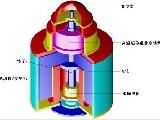The 6th International Energy-saving and New Energy Vehicles and Intelligent Transportation Exhibition is held at the Shenzhen International Convention and Exhibition Center. For more information, please contact 18671079399.
Abord prefers to share PSA Peugeot Citroën's carbon reduction strategy in China with others.
In the afternoon of December 11, 2009, the Sixth International Energy-saving and New Energy Vehicles and Intelligent Transportation Achievements Summit Forum was held at the Shenzhen International Convention and Exhibition Center. Similar forums were held at least five times in China in 2009. The guests present and the views expressed were almost the same; this forum had fewer guests and a smaller scale.
Therefore, only less than one-third of the large venue was filled with people. Although the reports from the speakers on stage were very perfect, the audience below just whispered and dozed off.
However, Abord, General Manager of the China Technical Center of PSA Group, listened very attentively, exchanging opinions from time to time with Jin Hong, the colleague responsible for translating for him. Abord wanted to understand the views of his domestic counterparts on the development of new energy and what specific actions they had taken that could be referenced.
But obviously, he missed the earlier exchange of views with other government officials and corporate leaders. Because here, his views were the most anticipated. He was the only representative of a foreign whole vehicle enterprise attending the forum, and among domestic self-own brands enterprises, only Changan Automobile made a brief introduction.
Abord was the last speaker in the afternoon. As a latecomer in launching its new energy strategy in China, PSA Group issued for the first time in China the ambitious goal of "by 2020, the group will reduce the carbon dioxide emissions per kilometer of all models sold in China by 50%."
At this point, those who were about to fall asleep or pack their bags to leave finally began to listen carefully to Abord's speech.
The entire speech process (including translation) by Abord took about 30 minutes, which was roughly the same as his self-introduction in the interview room the next day. Of course, the content was consistent. Afterward, when the reporter complained to him about hearing the same content twice, Abord smiled apologetically, saying that he only hoped to share PSA's determination to reduce carbon emissions with everyone. And the reporter from Automotive Business Review happened to be present in two such occasions.
In fact, domestically, the development of new energy vehicles has always been in an awkward situation: the government and enterprises seem highly enthusiastic, but current consumers are not buying the new energy vehicles available on the market. The main reasons are price and the maturity of technology. PSA is a latecomer, yet it has set such a big target. How can it achieve this? Is this another public relations stunt by the manufacturer?
Tapping into Traditional Potential
In the minds of many consumers, one major characteristic of new energy vehicles is the high price. In a survey conducted by Automotive Business Review in March 2009, many consumers indicated that compared to traditional gasoline cars, hybrid vehicles save 2 liters of fuel per 100 kilometers. If you drive 20,000 kilometers a year, you save only 1,000 yuan in fuel costs, and after ten years, you save only 10,000 yuan, by which time the car would have already been phased out.
Clearly, choosing higher-priced new energy vehicles does not seem worthwhile to consumers. Many salespeople at 4S stores only recommend traditional gasoline cars to consumers.
Many people attribute the high prices of new energy vehicles to the inability to mass-produce them, believing that only large-scale mass production can solve the price problem of hybrid vehicles. More consumers attribute the inability to mass-produce them to the immaturity of the product's technology. Taking BYD F3DM as an example, since its launch last year, this product, which aims to secure a place in the global automotive landscape, remains a legend to consumers.
"As a global car manufacturer, we face the same phenomena and problems around the world. We believe that a better way is to listen more to the voices of the government and consumers," Abord told Automotive Business Review. "The future development prospects of automobiles cannot solely rely on electric vehicles and hybrid vehicles. Regarding conventional traditional car engines, we will continue our efforts to improve them."
In addition, Abord introduced to the Automotive Business Review reporter a comprehensive plan for PSA Group to achieve its carbon reduction goals in the future. Improving automatic transmissions, upgrading related parts and using more energy-saving, environmentally-friendly, and lightweight materials, enhancing tire design, developing electric vehicles and hybrid vehicles. He emphasized that they will also consider prioritizing the purchase of components from companies with lower emissions.
Among these, improvements to the engine and automatic transmission are expected to reduce carbon emissions by 20%, while tires developed through joint research and design with partners can reduce carbon emissions during vehicle operation by 5%.
At this Shenzhen New Energy Vehicle exhibition, PSA Group exhibited a pure electric vehicle named VLV produced during World War II in 1941.
In 1941, France was occupied by German troops, and oil as a strategic material was no longer available for civilian use. To meet people's need for cars, PSA produced 400 two-seater small cars equipped with advanced lead-acid batteries of the time. These cars had a top speed of 36 kilometers per hour and a range of 80 kilometers per charge.
After nearly 70 years of change, this is no longer new technology. On this basis, PSA continuously strengthens the development and research of electric vehicles. By 2005, out of 30,000 electric vehicles worldwide, at least 10,000 were produced by PSA.
However, PSA does not believe that current pure electric vehicles, including BYD's lithium-ion battery cars, can effectively reduce carbon dioxide emissions. Especially in countries like China, where coal-fired electricity predominates. The conversion process from coal to electricity not only produces carbon dioxide but also leads to energy waste due to technological limitations. Batteries themselves pose the risk of secondary pollution, potentially causing even greater harm.
Abord believes that in China, without thoroughly solving the coal power problem or without effective implementation of 'carbon capture' (CCS technology, i.e., carbon capture storage) at coal power plants, large-scale promotion of electric vehicles will only increase carbon emissions. Therefore, under the premise of not having a better new energy strategy, PSA temporarily focuses on the transformation of new engine technologies and the promotion of the micro-hybrid STT technology.
STOP&START
According to PSA's plan, within the next 10 years, PSA will introduce six more efficient engines domestically. The next generation of gasoline engines will save up to 20% in fuel consumption and reduce carbon dioxide emissions compared to current engines. The recently launched Dongfeng Citroen C5 features a 2.3L full aluminum efficient engine, ensuring sufficient power while pursuing fuel economy.
At this Shenzhen New Energy exhibition, PSA globally premiered a new Dongfeng Citroen C-Elysée equipped with STT. STT stands for STOP&START, a stop-start system developed by Peugeot Citroen for situations in cities where traffic congestion and red lights frequently require temporary stops. The purpose is to avoid fuel consumption and pollution during stoppages.
The core technology allows the engine to enter standby mode when the vehicle is stationary, effectively reducing fuel consumption and greenhouse gas emissions. During temporary stops at red lights or in traffic jams, the stop-start system puts the engine into standby mode, eliminating vibrations and noise. This system significantly reduces fuel consumption by 15%, whether in light or heavy traffic.
This C-Elysée model will produce some prototypes in 2010 for consumer and specific customer test drives. They will investigate consumer reactions and evaluations and solicit feedback on pricing to decide when to launch the carbon-reducing C-Elysée and how to price it.
STT technology is not a new technology. In 2005, Peugeot Citroen developed it in Europe and installed it in some models of other brands, but the first-generation STT was mainly designed for European diesel vehicles. The version installed in this C-Elysée was developed by the Shanghai Technical Center according to China's road conditions and fuel quality.
Abord said: "The new generation of STT technology will meet the tastes and preferences of Chinese consumers, and PSA's development will also suit countries like Asia and Russia, which mainly use gasoline-driven vehicles."
Wu Jieyun is the project manager of the PSA Group China Technical Center EC8 engine project. At the media reception lunch on that day, Yue Wannian, the manager of the PR and Media Exchange Department of Peugeot Citroen (China) Auto Trade Co., Ltd., patted Wu Jieyun's shoulder and said: "This optimization and development of the second-generation STT was entirely handled by Manager Wu." Despite this, Wu Jieyun humbly smiled.
Wu Jieyun told Automotive Business Review: "STT still needs improvement. In Europe, it is mainly designed with an electric motor as the main component and a starter as the auxiliary. This technology is applied to diesel engines because diesel engines require more torque when starting and have a higher start temperature. In China, which mainly uses gasoline engines, the starter is the main component, and the role of the electric motor is only to control and supplement the battery."
As for the issues inherent in STT itself, Wu Jieyun stated that STT is already a very mature technology, but all products have defects. In Europe, these defects are called invisible fourth-level dangers. For example, if the green light turns on and everyone else moves forward, but your STT fails to start, or if the engine starts while the door is open, if the car is in first gear, stepping on the gas pedal instantly makes the car move quickly. All these issues must be considered, and all dangers must be reduced to the lowest level or eliminated.
Liu Fang is another Chinese person who came from the Shanghai PSA China Technical Center, and she is the only female member. Her position is the PSA Powertrain and Chassis Electronics Architecture Engineer. However, during this exhibition, her primary responsibility was handling the test drive activities of the new C-Elysée equipped with STT. She told Automotive Business Review that there were many people coming for test drives, and they had many questions about the new technology. Moreover, since this summit focused on technology, many technical experts came for test drives, even encountering several of her university professors.
Therefore, more issues regarding STT were raised, such as in cases of traffic congestion on Beijing ring roads, where the car can only slowly follow the car in front, move forward a bit, stop, and then move forward again repeatedly. The safety setting of STT is that it only starts when the car speed reaches 10 kilometers per hour. Thus, during high-congestion times and locations in Beijing, when STT should play a role, it fails to save fuel; and if it could start, how to ensure sufficient power for continuous parking and starting?
Regarding this, Abord said that the earlier the issues are discovered, the better. Preparing to let consumers and customers test drive next year is to present a perfect product to consumers after the product is launched.
Liu Fang told Automotive Business Review that the PSA R&D center in Shanghai emphasizes the goal of reducing carbon emissions by 50% every day, giving everyone a deep sense of urgency daily.
Currently, all whole vehicle enterprises lack better technologies to achieve energy saving and carbon reduction, and PSA has taken the first step to try to reduce carbon dioxide emissions and decrease petroleum usage. Although achieving carbon reduction during driving still requires some time for experiments and tests, at least PSA has embarked on the path of carbon reduction and set a very ambitious goal.
Hubei Jiangnan Dongfeng Special Purpose Vehicle Co., Ltd. is a designated production factory by the National Development and Reform Commission, the only fire truck production qualification factory in the Fire Bureau of the Ministry of Public Security, and a supporting modification factory of Dongfeng Motor Corporation. The main products produced and sold include fire trucks, tow trucks, aerial work platforms, side-opening box-type transport vehicles, water sprinklers, refueling vehicles, chemical liquid transport vehicles, flatbed transport vehicles, mobile power vehicles, garbage trucks, etc., with hundreds of varieties. All models have been listed in the national announcement directory, obtained ISO9001-2000 quality management system certification, and passed CCC certification.
Phone: 18671079399 0710-3328649 3328629 (Fax) Website: http://www.hbjndf.com
E-mail: [email protected]
Fire truck parameters, fire truck prices, fire truck pictures, water sprinkler parameters, water sprinkler prices, water sprinkler pictures, refueling vehicle parameters, refueling vehicle prices, refueling vehicle pictures, tow truck parameters, tow truck prices, tow truck pictures, aerial work platform parameters, aerial work platform prices, aerial work platform pictures, garbage truck parameters, garbage truck prices, garbage truck pictures, refrigerated truck parameters, refrigerated truck prices, refrigerated truck pictures, blasting materials transport vehicle parameters, blasting materials transport vehicle prices, blasting materials transport vehicle pictures, flatbed transport vehicle parameters, flatbed transport vehicle prices, flatbed transport vehicle pictures



